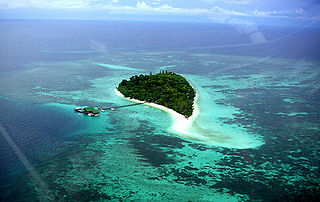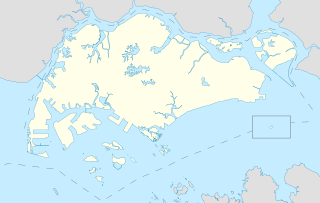
Sea turtles, sometimes called marine turtles, are reptiles of the order Testudines and of the suborder Cryptodira. The seven existing species of sea turtles are the green sea turtle, loggerhead sea turtle, Kemp's ridley sea turtle, olive ridley sea turtle, hawksbill sea turtle, flatback sea turtle, and leatherback sea turtle. All six of the sea turtle species present in U.S waters are listed as endangered and/or threatened under the Endangered Species Act. The seventh sea turtle species is the Flatback, which exists in the waters of Australia, Papua New Guinea and Indonesia. Sea turtles can be separated into the categories of hard-shelled (cheloniid) and leathery-shelled (dermochelyid). There is only one dermochelyid species which is the leatherback sea turtle.

The leatherback sea turtle, sometimes called the lute turtle or leathery turtle or simply the luth, is the largest of all living turtles and is the fourth-heaviest modern reptile behind three crocodilians. It is the only living species in the genus Dermochelys and family Dermochelyidae. It can easily be differentiated from other modern sea turtles by its lack of a bony shell, hence the name. Instead, its carapace is covered by skin and oily flesh.

Buck Island Reef National Monument, or just Buck Island, is a small, uninhabited, 176 acre island about 1.5 miles (2.4 km) north of the northeast coast of Saint Croix, U.S. Virgin Islands. The monument also includes 18,839 acres of submerged lands totaling 19,015 acres. It was first established as a protected area by the U.S. Government in 1948, with the intention of preserving “one of the finest marine gardens in the Caribbean Sea.” The U.S. National Monument was created in 1961 by John F. Kennedy and greatly expanded in 2001 by Bill Clinton, over the bitter opposition of local fishermen. Buck Island National Monument is one of few places in the Virgin Islands where brown pelicans and threatened least terns nest.

The olive ridley sea turtle, also known commonly as the Pacific ridley sea turtle, is a species of turtle in the family Cheloniidae. The species is the second-smallest and most abundant of all sea turtles found in the world. L. olivacea is found in warm and tropical waters, primarily in the Pacific and Indian Oceans, but also in the warm waters of the Atlantic Ocean.

Redang Island is an island in Kuala Nerus District, Terengganu, Malaysia. It is one of the largest islands off the east coast of Peninsular Malaysia. It is famous for its crystal clear waters and white sandy beaches. It is one of nine islands, which form a marine sanctuary park offering snorkeling and diving opportunities for tourists.

The loggerhead sea turtle, is a species of oceanic turtle distributed throughout the world. It is a marine reptile, belonging to the family Cheloniidae. The average loggerhead measures around 90 cm (35 in) in carapace length when fully grown. The adult loggerhead sea turtle weighs approximately 135 kg (298 lb), with the largest specimens weighing in at more than 450 kg (1,000 lb). The skin ranges from yellow to brown in color, and the shell is typically reddish brown. No external differences in sex are seen until the turtle becomes an adult, the most obvious difference being the adult males have thicker tails and shorter plastrons than the females.

Turtle Islands, officially the Municipality of Turtle Islands, is a 5th class municipality in the province of Tawi-Tawi, Philippines. According to the 2015 census, it has a population of 4,727 people.

The green sea turtle, also known as the green turtle, black (sea) turtle or Pacific green turtle, is a species of large sea turtle of the family Cheloniidae. It is the only species in the genus Chelonia. Its range extends throughout tropical and subtropical seas around the world, with two distinct populations in the Atlantic and Pacific Oceans, but it is also found in the Indian Ocean. The common name refers to the usually green fat found beneath its carapace, not to the color of its carapace, which is olive to black.

The Australian flatback sea turtle is a species of sea turtle in the family Cheloniidae. The species is endemic to the sandy beaches and shallow coastal waters of the Australian continental shelf. This turtle gets its common name from the fact that its shell has a flattened or lower dome than the other sea turtles. It can be olive green to grey with a cream underside. It averages from 76 to 96 cm in carapace length and can weigh from 70 to 90 kg. The hatchlings, when emerging from nests, are larger than other sea turtle hatchlings when they hatch. The flatback turtle is listed by the IUCN Red List of Threatened Species as data deficient, meaning there is insufficient scientific information to determine its conservation status at this time. It was previously listed as vulnerable in 1994. It is not as threatened as other sea turtles due to its small dispersal range.

Lankayan Island is a small tropical coral resort island in Beluran, Sabah, Malaysia in the Sulu Sea.

Mon Repos Conservation Park is a national park containing an important turtle rookery located at Mon Repos, Bundaberg Region, Queensland, Australia, 14 kilometres (8.7 mi) east of Bundaberg. Mon Repos hosts the largest concentration of nesting marine turtles on the eastern Australian mainland and supports the most significant nesting population of the endangered loggerhead turtle in the South Pacific Ocean. Successful breeding here is critical if the loggerhead species is to survive. In far smaller numbers the flatback and green turtles and, intermittently, the leatherback turtle also nest along the Bundaberg coast.
Gahirmatha Beach is a beach in Kendrapara district of the Indian state of Odisha. The beach separates the Bhitarkanika Mangroves from the Bay of Bengal and is the world's most important nesting beach for olive ridley sea turtles. The beach is part of Gahirmatha Marine Wildlife Sanctuary, which also includes the adjacent portion of the Bay of Bengal.

Threats to sea turtles are numerous and have caused many sea turtle species to be endangered. Of the seven extant species of sea turtles, six in the family Cheloniidae and one in the family Dermochelyidae, all are listed on the IUCN Red List of Endangered Species. The list classifies six species of sea turtle as "threatened", two of them as "critically endangered", one as "endangered" and three as "vulnerable". The flatback sea turtle is classified as "data deficient" which means that there is insufficient information available for a proper assessment of conservation status. Although sea turtles usually lay around one hundred eggs at a time, on average only one of the eggs from the nest will survive to adulthood. While many of the things that endanger these hatchlings are natural, such as predators including sharks, raccoons, foxes, and seagulls, many new threats to the sea turtle species are anthropogenic.

Pom Pom Island is a small coral reef island in the Celebes Sea approximately 30 kilometres north east of Semporna town, Sabah, East Malaysia.

The Oracabessa Bay Fish Sanctuary was established in 2010 to protect Oracabessa’s marine ecosystem. Its mission is to increase biodiversity in Oracabessa Bay to improve livelihoods in the local community. Through investments by the Oracabessa Foundation, Seacology, and GEF, the Fish Sanctuary has reintroduced Sea turtles and thousands of new coral into the Oracabessa Bay area. There are several reefs located in the Oracabessa Bay Fish Sanctuary as well as mangroves and beaches including James Bond Beach. The Golden Clouds reef is one of the largest in Oracabessa Bay and is a popular dive destination due to its diverse reef structure, vibrant marine life and close proximity to the Cayman Trough.

Taganak Island is a small tropical island surrounded by the Sulu Sea in the province of Tawi-Tawi, Philippines. The island is the largest of the seven Philippine Turtle Islands.
The Bald Head Island Conservancy (BHIC) is a non-profit organization founded November 7, 1983. BHIC's mission is barrier island conservation, preservation and education. It is located in the Smith Island Complex in Brunswick County, North Carolina, which includes Bald Head Island, Middle and Bluff Islands, all of which are bounded by the Cape Fear River and the Atlantic Ocean. BHIC sponsors and facilitates scientific research that benefits coastal communities and provides numerous recreational and educational activities for students, educators, visitors, and residents. In coordination with various organizations, partnerships and collaborations, the Conservancy has led the nation in conservation and research efforts and is uniquely poised to become a leader in Barrier Island Conservation world-wide.

Sisters’ Islands Marine Park is a 400,000 square metre(40ha) marine park located in Southern Islands planning area, Singapore, which was designated a marine protected area (MPA) by the Government of Maritime and Port Authority of Singapore in 2014. The park encompasses the land and waters surrounding Sisters' Islands, and also covers the western coasts of both St John's Island and Pulau Tekukor.

Little Bakkungaan Island is a tiny, flat, tropical island surrounded by the Sulu Sea in the state of Sabah, Malaysia. The island is the largest of the three Malaysian Turtle Islands that together comprise the Turtle Islands National Park. It covers a land area of 8.5 hectares. It is at the very edge of the international treaty limits separating Malaysia from the Republic of the Philippines. Indeed, the island itself is referred to in the international border treaty concluded in 1930 between the United States and the United Kingdom. That treaty sets the international frontier as running in a straight line between Little Bakkungaan Island and Great Bakkungaan Island. Great Bakkungaan Island is one of the Philippine Turtle Islands and less than 2km of water separate the two islands. This makes Little Bakkungaan Island the internationally recognised Malaysian territory that is closest to Philippine territory. The island hosts a turtle hatchery. The island is administered by Sabah Parks. There are several buildings on the island used by park rangers as well as a peer. Much of the island is surrounded by beach.

The Talang Satang National Park is a national park in Kuching Division, Sarawak, Malaysia. It is Sarawak's first marine protected area, and covers the four islands Pulau Talang-Talang Besar, Pulau Talang-Talang Kecil, Pulau Satang Besar and Pulau Satang Kecil and surrounding coral reefs.


















